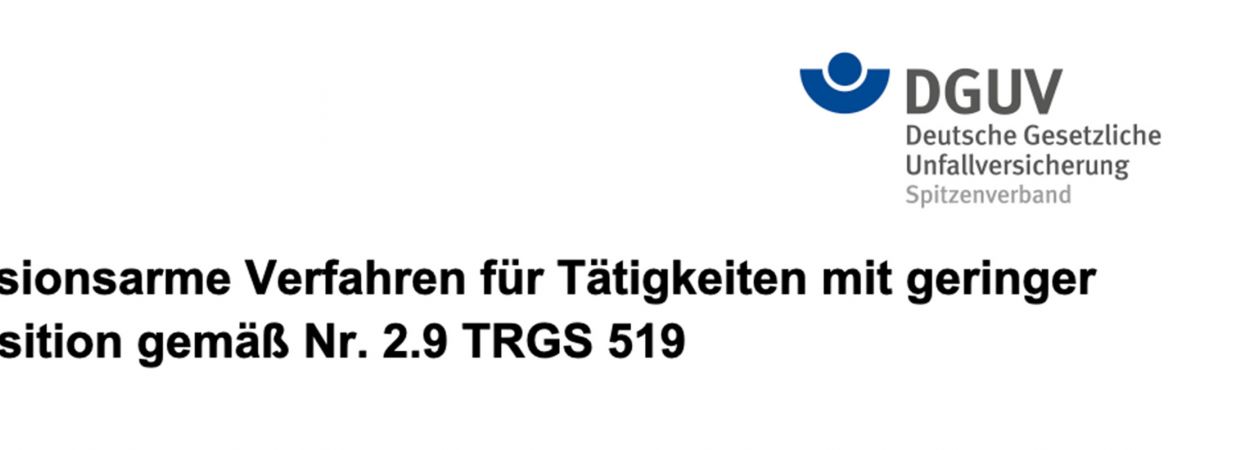english – BT 61: Procedure for cured-in-place pipes in asbestos cement sewers has been published
Finally! The German Social Accident Insurance has published the BT-61 procedure for the maintenance of sewer pipes made of asbestos cement.
In addition to the pipe bursting procedure (BT 16), cured-in-place pipe lining (BT 61) has now been officially published as a low-emission procedure in accordance with TRGS 519.
For companies that carry out sewer rehabilitation using this procedure, this means that a notification is sufficient: Notification to the relevant trade supervisory authority is sufficient to maintain an underground sewer pipe made of asbestos cement using cured-in-place pipe lining (for further information, e.g. on proof of expertise, please refer to our handout). Important: The protective measures required in the process description must be observed.
The RSV submitted the corresponding application in spring 2023. In April 2024, the decisive working group of the Institute for the Protection of Labour (IFA) of the German Social Accident Insurance decided to approve the RSV's application. Another procedure has now been added to the list of BT procedures.
The procedure has been published on the IFA website under the web code D646056.
"We are very pleased about the publication, because we know: Many local authorities are literally scrambling to finally be able to renovate their asbestos cement sewers with cured-in-place pipes," explains RSV Managing Director Reinhild Haacker.
The association has been working on the topic since the end of 2020 and has initiated the application process with the support of network operators, engineering firms and contractors. "That was quite a lot of work. We would like to take this opportunity to thank all member companies who contributed to this," says Haacker. Daniel Korczinski from the engineering firm ISAS put in the most time and effort. He took on the project management and, in addition to his work as ladder of the Erlangen branch, played a key role in organising the application.
This means the approval
Inclusion in the list of low-emission procedures in accordance with TRGS 519 makes it easier for network operators to tender for the sewer rehabilitation of asbestos cement pipes in a legally compliant and simple manner. No separate official authorisation needs to be obtained. The minimally invasive rehabilitation method often referred to as the "inliner procedure" can thus be used for the maintenance of sewer pipes with legal certainty.
The "low-emission procedures" were introduced in the Hazardous Substances Ordinance in order to define exceptions to the ban on the use of asbestos. According to paragraph II of the Annex to the Hazardous Substances Ordinance (GefStoffV), those "low-emission procedures" that are "recognised by the authorities or the statutory accident insurance institutions" are exempt from the ban.
For recognition as a low-emission procedure in accordance with TRGS 519, it must be demonstrated for several sites that the limit values for the fibre concentration at the workplace are complied with during the individual process steps.
The approval relates to the use of cured-in-place pipes including the restoration and connection of connecting pipes and manholes.
